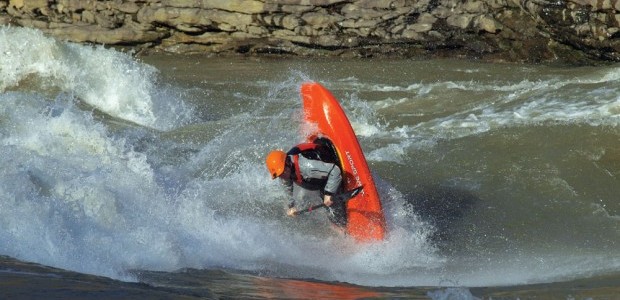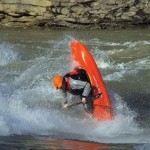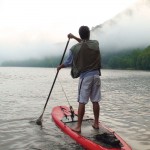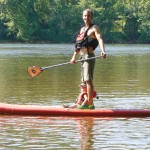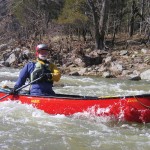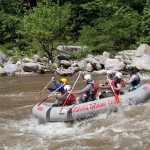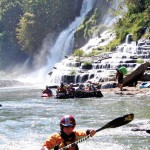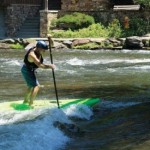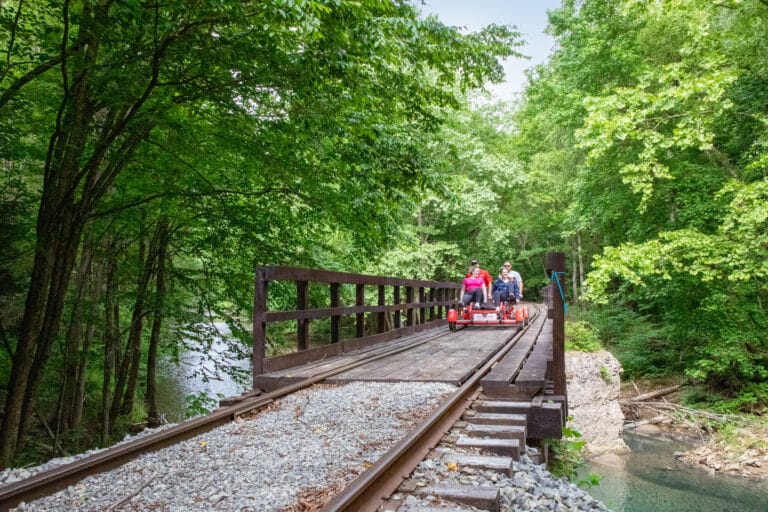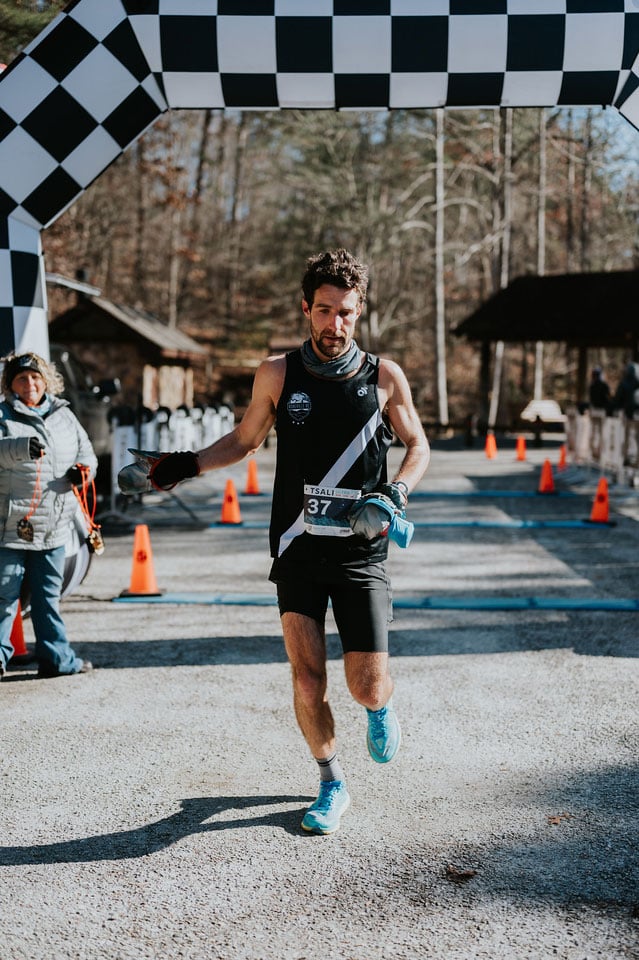Wet at the Dries: Bryan Kirk gets creative on the put-in waves of the New River Dries, WV. Photo: Shane Groves
Ed Montgomery has paddled all over the country, but the Tennessee native says boating in the Southern Appalachians is as good as it gets.
“The water is just so condensed here in the Southern Appalachians. There are a lot more options for boaters in a relatively small region,” says Montgomery, who’s been a member of the Tennessee Eastman Hiking and Canoe Club for 28 years.
Choosing a favorite among those rivers can be tough. But that’s exactly what we asked them to do. We polled some of the South’s most experienced boaters, from world-class pros to local gurus, to pick their personal favorite rivers. Here are their selections.
Favorite Beginner Whitewater
Potomac River, MD —Tom McEwan, long-time boater credited with the first descent of the Great Falls on the Potomac and founder of Liquid Adventures Kayak School
The Potomac is a river with many different reputations. It’s a hair-boater’s delight with the massive Great Falls, an intermediate boater’s in-town blast with stretches of class III water, and a beginner boater’s dream, with a progression of water ideal for learning the ins and outs of river running. The diverse nature of water on this single river in a relatively short expanse is exactly why Tom McEwan based his kayak school on its banks.
“You get the whole spectrum of boating on this one river. There’s something for every level of boater, particularly beginners looking to progress from their first time sitting in a boat to running class I-II comfortably.”
If it’s your first time in a boat, you can paddle the flat C&O Canal next to the Potomac, then move to the 3.5-miles of class I riffles that occupy the water between Lock 10 and Sycamore Island. When you’re ready for your first taste of real whitewater, the Violet’s Lock run is waiting.
Beginner River Cred: The Potomac could be the most popular place to learn how to kayak in the South, period. The myriad of canoe clubs and pay-to-learn kayak schools that occupy the greater D.C. area lean on this stretch of the river to teach a boater their first strokes. On any given weekend, dozens of newbie boaters flock to the gentle waters around Anglers Inn. While the “crowded” water can be frustrating for experienced boaters, it’s reassuring for beginners to know they’re not in it alone.
Rapids: From Violet’s Lock downriver, expect Class I-II rock gardens and ledges, ideal for practicing key river running moves like catching eddies. The most notable rapid is the class II Surfer’s Hole, a fun hydraulic that invites surfing from all boaters, regardless of skill level. You’re actually paddling a portion of the failed George Washington Canal through this stretch, which has been reclaimed by the river.
Logistics: For solid beginner whitewater, put in at the picnic area for Violet’s Lock, a low-water dam you can paddle across and play on, and head downstream for 1.5 miles of class I-II rock gardens and rapids. You can combine this run with a flatwater paddle on the adjacent C&O Canal in the opposite direction for a 4-mile loop paddle with no shuttle.
Tuckasegee Gorge, NC —Anna Levesque, former freestyle world champ and founder of Girls at Play, an organization that provides instruction and guided trips for women
It’s easy to overlook the Tuckasegee River as a paddling destination. Just pass through this section of Western North Carolina and you’d see a river banked by flea markets and gas stations along a four lane highway, but just upstream of this well-traveled stretch of water is the Tuckasegee Gorge, a five-mile run of mellow class I-II water that’s ideal for boaters just getting their sea legs.
“The gorge is perfect for true beginners, but it’s completely underrated,” says Anna Levesque, the founder of Girls at Play who uses the Tuck as a teaching destination for her clients. “There are tons of spots for eddy turns, peel outs, ferries—the kinds of river-running skills beginners need to work on in a slower moving river.” Even better? The water is warm, typically in the high 60s, which can make all the difference in the world for a first-time boater.
Beginner River Cred: The Tuck Gorge was made for learning how to kayak. The section between access points is relatively short (five miles) so you don’t have to constantly worry about moving downriver to make the take out. You can take your time and work on the quintessential skills at your own pace. There are beaches where you can pull over and practice rolling. Wave trains are common and the safest lines through rough water are usually easy to discern. Between any notable rapids, you’ll have the opportunity to catch eddies and gather your senses.
Rapids: The five-mile run between Dillsboro and Tuck Outfitters is full of mellow class I and a handful of named class II rapids, but forget the names. “People get freaked out when they hear the names of some rapids,” Levesque says. “If you don’t tell them the rapid is named ‘Hell Hole’ or ‘Frankenstein,’ they tend to focus more on what they have to do to navigate the water.”
Logistics: Put in at the public access point in Dillsboro near the train station and arrange for a shuttle, gear, or guide with the Dillsboro River Company, across the street from the put in.
Girls at Play: Watch video of Anna Levesque discuss kayaking for women and beginners.
